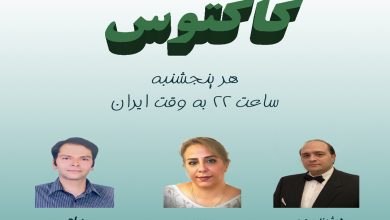
Now that we are passing another Persian year and are gradually preparing ourselves to celebrate the 2581 new year, it is not inappropriate to get a little acquainted with its customs and the source of Persian deeds in these times. The basis of the solar year was established and implemented by the great sage Omar Khayyam, but its time and basis were calculated from the time of the domination of Umar ibn al-Khattab, the third caliphate, over Iran. The Arab invasion of Iran took place in the year 30 lunar year, in accordance with the year 651 CE. The beginning of the new solar year of Nowruz is determined by the patriotic Iranians and the Shah accepts their proposal.
In ancient Iran, the beginning of the new year began with the Souri celebration and ended with the thirteenth-day ceremony. Now, step by step, we will review this ceremony in a general and brief way.
1 – The last night of Wednesday celebration or Fire Ceremony:
The Souri festival or the celebration of fire was sacred in the beliefs of many ancient Iranians. Not because today, they are mistakenly accused of them worshipping fire, but because they considered God to be absolute light and, in their time, the fire was the only means of illumination, so it was sacred to them. As the lighting of candles in other religions is derived from this belief. The word “Sour” means “red” and “fire”. In ancient Iran, there was a Fire Festival every month, of which today only the Sadeh Souri (in the middle of summer and the last night of Wednesday celebrations remain. Hence, these celebrations were called Souri, the main element of which was the fire. The Souri festival was held on the last Friday night every year and began by going to the room of the dead It is interesting that this ceremony has penetrated among Muslims as well, and they all visit the graves on the last Friday of the year! People believed that the spirits would descend to the ground on this night and that they would be our guests, so they would finish the house cleaning before this day. On this night, people generally ate food similar to noodle soup and believed that noodles make life and work long and blessed. Other delicacies of this night are dried nuts, which include: pistachios, almonds, elm, raisins, walnuts, peach leaves, figs and dates, and it is also known as seven fruits. These nuts are charitable and people vowed to solve their problems. Interestingly, the Iranian people still believe in troublesome nuts. The pottery’s fortune-telling is one of the most fascinating Souri rituals that is also performed on the night of Yalda, in the past with Avesta poems and now with Hafez’s poems. The method is that everyone throws something in the jar and then puts the poems in the jar. Then a child puts his hand in the jar and takes out an object with a poem that the fortune seeker owns the object. It is necessary to add another fortune-telling by listening to passersby called “Fal goush” and going to doors with a spoon and a saucer while beating them together, which is worth mentioning. The same door-to-door going that has faded these days is done in Western countries on Halloween. In the scarf-throwing ceremony, those who had a fiancée threw their scarf down from the roof of their fiancée’s house but should not be seen, they tied a gift to their scarf so that she could collect it from below. It should be noted that in the past, fires were also lit on the roofs of houses.
After the Arab invasion of Iran and the destruction of these celebrations, some people decided to think of a solution. The Arabs, who believed that Wednesdays were a day of misery and misfortune, did not resist the Iranian suggestion that it be cleansed by celebrating the last night of Wednesday every year, and it was in this way that the Souri celebration turned into a Wednesday Souri. The Iranians, who considered fire sacred, considered jumping over it a sin, but the Arabs did not pay attention and this heresy was newly established.
2 – Nowruz:
A) Haftsin: The sanctity of the number seven comes from the fact that Ahura Mazda and the six Amshaspandans or angels (Khortat, Amurtat, Ordivohousht, Vuhoman, Shahrivar, Espandarmaz) are a total of seven Sepantas (sacred angels). Of course, there are many examples about the number seven and its sanctity, such as: 7 foods that God sent to Jesus Christ (leek, vinegar, oil, honey, salt, fish, bread) or 7 cities of love or according to the ancients, 7 old things are good: love, companion, book, sword, wine, bath, porcelain. Or 7 garments (henna), magenta, mole, bleach, zerek, vesmeh, kohl) which were placed on 7 places of the body (hands, feet, face, hair, eyes, eyebrows, neck). And 7 places of contact of the body with the earth when praying and 7 axes of gold, silver, zinc, copper, tin, iron, lead etc.
B) Haftsin or Haftshin? Many books refer to Haft Shin, including:
“Nowruz celebration has been celebrated
by the people of Iran since time immemorial
Candles, milk, wine, sweets,
sugar, honey and tea in the house[1]”
Here it is worth mentioning the conditions of the materials in this tablecloth must be with the letter “s” in Persian and should have the following factors:
1- The name must be Persian
2- Have plant roots
3- It should be edible
4- It should not be a compound name.
As we can see in the above composition, “candle (Sham’)” is an Arabic word and its Persian is “Afroozeh” or “Espandar”. “Honey (Shahd)” is also an Arabic word with the Persian meaning of “Angabin”. It is also “wine (Sharab)” which becomes “Badeh”. Therefore, the abolition of one of the above conditions leads to the abolition of this hypothesis, but on the other hand, it can be said that the statement is correct and valid. If we search in Parthian and Sassanid Persian languages, we see that the Sassanids did not have the “sh” sound and the Parthians did not have the “s” sound, completely opposite to them. Today, Persian is a combination of these two languages. As the two words “angel (Fereshte)” and “messenger (Ferestade)” or “fist (Mosht)” and “Poor (Mostmand)” have the same root. Other examples are “roar (Khoroush)” and “rooster (Khorous)”, “plain” (meaning the first money a person receives on the first day, week, month: Dasht) and “hand (DAST)” etc. So, it can be acknowledged that 7 shin was the same 7 sin that was pronounced in Parthian language.
It is interesting that the mentioned factors exist for the materials in Haftsin among more than 15 million Persian words in only 7 words that start with “S”. But these are the representatives of Ahura Mazda and the six Amshaspandans, as follows:
Ahuramazda (God): Garlic
Khortat: Sumac
Amurtat: vinegar
Ordivohousht: grass
Vuhoman: silverberry
Shahrivar: Samanou (a sweet pudding made with germinated wheat sprouts and flour)
Espandarmz: Apple
C) Seven Chins: Some historians have also referred to the seven chins and say that they picked seven fruits from seven trees and placed them on seven tables.
D) Grass: In the case of grass, it was the case that the seeds of seven plants were planted on March 10, and each of them grew better until the beginning of the year, they planted it for the upcoming year. On the other hand, the belief that tying a grass is applicable only for marriage, and it is interpreted that the container in which the grass has grown is like the earth, and the seeds of the plants are young people who have grown up together but alien, and Tying green is just like tying them. So, only for marriage, you should tie a grass knot and no other things.
E) Book: Before the Zoroastrian religion, a book, which was a symbol of wisdom, was placed on the seven sins, but after the advent of Zoroastrianism, the book of Avesta came on the seven sins, and this continued until the Arabs invaded Iran and the Avesta was replaced by the Holy Quran.
3- Thirteenth-day ceremony:
There is always a lot of talk about the inaccuracy of the number thirteen, and there has always been a so-called superstition throughout this period, and it is interesting that this “superstition” exists all over the world, from small and newly established countries and the Third World to large, old and developed countries. Even in the United States, there are hotels that do not have a 13th floor, and many people do nothing on the thirteenth day of each month, and even in Iran, from distant times, on the thirteenth day of Farvardin (April 2nd), people go to the natural sites. But where does this idea come from? This goes back to the beliefs of the ancient Mithras and Iranians. Contrary to popular belief, the only god in this religion is Zorwan, and after him, there are two gods. These two gods, who according to the Avesta and the inscriptions obtained are numerous, are the children of Zorwan. There are also six Amshaspandans (angels) in the Zoroastrian religion, which are: Khortat, Amratat, Ordi and Hoosht, Vohman, Shahrivar, Espandarms, respectively. It is interesting to know that the sanctity of the number seven originates from here, that is, Ahura Mazda and the six Amshaspandans, and each of these seven mentioned cases has a hyacinth for itself, which is beyond the scope of this discussion.
There are also five lords in the ritual, which are: Mithra, Veron, Andrea, Nasti, and Anahita. Now, if we put Ahura Mazda and the six Amshaspandans and these five lords of the order, respectively, we have a total of 12 good sacred beings and the thirteenth will be the devil. This is why the number 13 has long been considered unlucky.
The last day of celebrating the new year is the thirteenth day, and the ancients believed that evil spirits came to earth with the devil, but when they saw people in nature, they were afraid and did not approach the earth. There is also the belief that this is the day of worshipping God and asking for rain. Draw a green knot on this day. Another tradition of this day is “Thirteenth day Lies”, where everyone tells a funny lie, which is very similar to April Fool’s Day in the West. On this day, people eat noodle soup, which indicates the longevity and the year that has begun.
[1] Sham’, Sharab, Shirini, Shekar, Shahd, Shai





